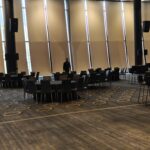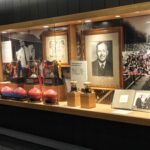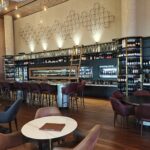News
What can Brisbane learn from the Adelaide Oval?
When Adelaide Oval was redeveloped between 2009 and 2014, it marked more than the upgrade of a stadium; it became a city-shaping project that transformed Adelaide’s identity and economy.
With a total cost of $535 million, the project was delivered within 100 weeks. Since reopening, it has consistently injected over $330 million annually into South Australia’s economy, supported thousands of ongoing jobs, and redefined the city’s event hosting capabilities through attracting over 5 million annual visitors to the city’s revitalised CBD’s hotels, bars, restaurants and venues.
Now, Brisbane stands at a similar crossroads, with the proposed Victoria Park stadium for the Brisbane 2032 Olympic and Paralympic Games. The question is: can Brisbane emulate and build upon Adelaide’s success?
On a recent trip to the City of Churches, and as an excuse to catch his beloved Crows take on the Demons, Ryan headed to the Adelaide Oval to see what Brisbane 2032 can learn from investment in sporting infrastructure close to an existing CBD.
Without the investment in the Adelaide Oval, I think it is fair to say that the city would have struggled to create iconic new events such as the Day/Night Pink Ball Test Matches, the AFL Gather Round or State of Origin. But what struck me more than anything was the desire for Adelaide Oval to become a destination outside of the fixture list.
Adelaide Oval has evolved into a mixed-use precinct, offering far more than just sport. In 2020, the venue became home to the Oval Hotel, the first stadium-integrated hotel in Australia, featuring 138 boutique rooms and the elegant Bespoke Wine Bar & Kitchen, showcasing the best local produce and wine. Within walking distance are numerous restaurants and bars, the Riverbank entertainment precinct, the Adelaide Casino, and cultural institutions such as the Art Gallery of South Australia and the South Australian Museum. On site, visitors can also explore the Bradman Collection, a permanent museum exhibit honouring cricket and maybe Australia’s most legendary figure. History buffs can take a heritage-focused stadium tour that delves into the architecture and lore of the Oval itself, while thrill seekers can enjoy a unique view of the city with the Adelaide Oval Roof Climb, which takes guests to the top of the Western Stand.
In addition, major concerts by global artists, State of Origin rugby league matches, AFLW Grand Finals, and even the iconic Christmas Pageant, held there during COVID have attracted new audiences to the city and the Oval, increasing the ROI and elevating the entire precinct into one of the country’s most successful examples of urban regeneration through stadium infrastructure.
- oplus_3145728
- oplus_3145728
- oplus_3145728
- oplus_3145728
Here’s what Brisbane needs to think about:
✅ Integrated Planning Wins: Like Adelaide, Brisbane must treat Victoria Park as part of a broader urban transformation, not just a sports facility.
✅ Events Follow Infrastructure: The biggest games and concerts go where the venues are best.
✅ Return Must Be Measured in Full: That includes tourism spend, jobs, property uplift, and city branding, not just gate receipts.
✅ Legacy Is the Real Prize: Brisbane 2032 is a moment, but the stadium and its surrounding infrastructure will define Brisbane for decades.
Visiting Adelaide and the Adelaide Oval has reinforced the benchmarks Brisbane has to surpass. Victoria Park is a huge opportunity for Brisbane, and if delivered with the same strategic intent, financial discipline, and civic ambition, will be a city-shaping project with a strong legacy of economic success.
And equally importantly, the Crows defeated the Demons with 42,921 in attendance, taking full advantage of everything that the Adelaide Oval, precinct and CBD offers.




